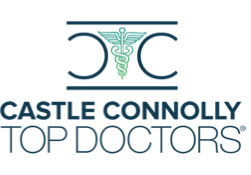When patients experience shooting pains in the buttocks or legs, many mistake it for a pulled muscle or location-specific injury. However, this pain may be the symptom of a much larger issue occurring in the spine. Whether it’s pain, numbness, or weakness in the legs, these symptoms are often diagnosed as sciatica. When I speak to patients, there is often confusion about what sciatica means and how it can be treated. Today, I’m explaining the condition, what causes the pain, who is at risk, and a few simple treatment options.
What is sciatica?
To be clear, sciatica is actually a catch-all term that describes symptoms such as leg pain, tingling, numbness or weakness that originates in the lower back and travels through the buttock and down into the leg. Therefore, sciatica is not a medical condition that can be treated on its own. Rather, it is a symptom of an underlying medical condition.
Who is at risk?
While sciatic pain can occur at any stage in life, men and women between the ages of 30 and 50 are most likely to experience it. Those with arthritis, diabetes, and high BMIs are also more likely to suffer from sciatica. Pregnant women are also more likely to experience pain and numbness, especially during their third trimester. Adults who are required to sit or drive for extended periods of time may also experience sciatic pain.
How is sciatica diagnosed?
A number of tests can be used in order to diagnose sciatica and determine the cause of the pain. Most commonly used are x-rays, magnetic resonance imaging (MRI) and computerized tomography (CT) scans. X-rays allow doctors to see fractures or bone spurs. MRIs and CT scans create detailed imagery, which are useful for diagnosing herniated discs or exposed nerves.
What causes sciatica?
Sciatica most commonly occurs when a herniated disk or a bone spur on the spine compresses part of the nerve. Sciatica might also be a symptom of a pinched nerve, affecting one or more of the lower spinal nerves. Other common causes include herniated discs, degenerative disc disease, spinal stenosis, and scoliosis.
How is sciatica treated?
Ordinarily, nonsurgical treatments can ease the pain of sciatica, which often goes away with time. In fact, 80% of those suffering from sciatica recover without the need for surgery. Bed rest, or a lightened activity load, paired with over-the-counter pain medicine, is commonly recommended. Physical therapy, including hot or cold compresses, stretching, and basic aerobic exercise are often effective treatments as well. In more severe cases, spinal injections into the lower back might help reduce swelling and inflammation and allow for increased mobility. In cases where treatments are not effective and pain is severe enough to interfere with everyday life, surgery may become a necessary solution.
Most often, sciatica and other back pain improves with time and basic self-treatment. However, some serious symptoms can occur which may indicate the need for more immediate medical attention. If pain restricts daily activity and persists for more than six weeks, consult your physician.









